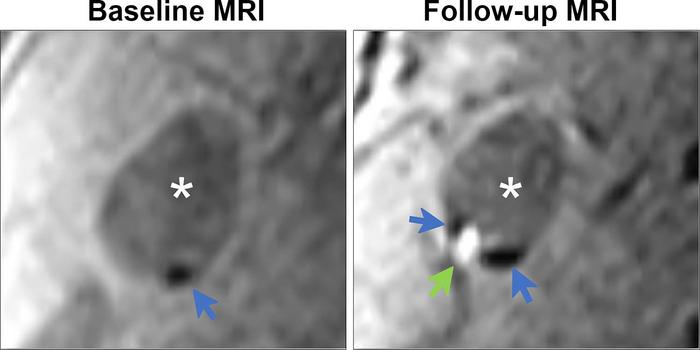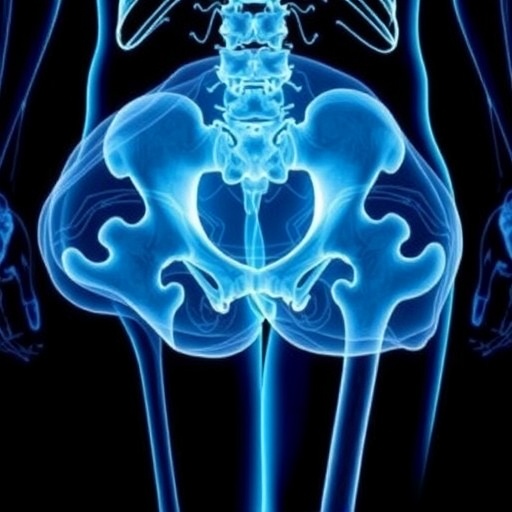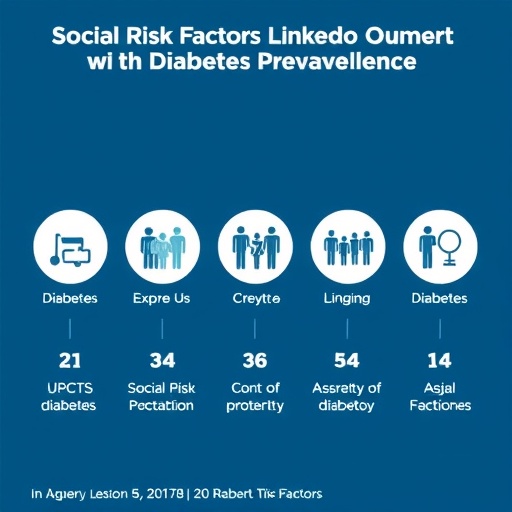In a groundbreaking study leveraging the expansive Rotterdam Study cohort in the Netherlands, researchers have unveiled critical insights into the dynamic nature of carotid artery atherosclerotic plaques in asymptomatic individuals. Employing advanced serial magnetic resonance imaging (MRI) techniques, this investigation sheds light on how these plaques evolve over time, challenging the long-standing view that calcified plaques are inherently stable and less dangerous. Published recently in the prestigious journal Radiology, the findings emphasize the potential for seemingly quiescent plaques to undergo changes that heighten the risk of severe cerebrovascular events, including stroke.
Atherosclerosis, characterized by the buildup of lipids, cholesterol, calcium, and cellular debris within arterial walls, is a pervasive contributor to vascular diseases worldwide. Particularly concerning are plaques forming in the carotid arteries—the principal vessels supplying oxygenated blood to the brain. Traditionally, calcification within these plaques was seen as a marker of plaque stability, presumed to fortify the lesion and reduce the likelihood of rupture. However, emerging evidence from this study complicates that narrative, revealing that plaques containing calcification are not necessarily benign, but may, in fact, be predisposed to intraplaque hemorrhage (IPH), a dangerous complication implicated in plaque destabilization.
The research team, led by Dr. Daniel Bos from Erasmus MC, University Medical Center Rotterdam, executed a longitudinal study involving 802 participants aged 45 and older, all initially free from clinical symptoms of carotid artery disease. Through high-resolution T1-weighted gradient-echo noncontrast MRI sequences, the team meticulously characterized the carotid plaque compositions twice—at baseline and six years later. This non-invasive imaging modality excelled in visualizing distinct plaque components, such as calcifications, fatty deposits, and most notably, intraplaque hemorrhages, which manifest as hyperintense signals proximate to calcified regions.
.adsslot_86jY9sdBPn{ width:728px !important; height:90px !important; }
@media (max-width:1199px) { .adsslot_86jY9sdBPn{ width:468px !important; height:60px !important; } }
@media (max-width:767px) { .adsslot_86jY9sdBPn{ width:320px !important; height:50px !important; } }
ADVERTISEMENT
A pivotal observation from the serial MRI scans was the colocalization of pre-existing calcifications with new incidences of intraplaque hemorrhages within the same plaques. This phenomenon was particularly troubling, as IPH is recognized as one of the most significant predictors of plaque rupture and subsequent stroke. Through quantitative analysis, plaques harboring calcifications at baseline were found to have double the risk of developing intraplaque hemorrhage over the study period compared to non-calcified plaques. Such findings compel a re-evaluation of calcification’s protective role and suggest that certain spatial and compositional interactions within plaques may catalyze vulnerability rather than stability.
Further dissecting the temporal progression of plaque morphology, the researchers noted a marked increase in plaque complexity over the six-year interval. Initial plaques, often composed of a single predominant component, evolved into multifaceted lesions exhibiting combinations of calcification, hemorrhage, and lipid-rich necrotic cores. This morphological diversification was more pronounced in male participants, hinting at possible sex-related biological differences in plaque pathophysiology. Such complexity is clinically significant, as multicomponent plaques are widely associated with increased propensity for rupture and adverse cerebrovascular outcomes.
To extend their findings beyond the temporal confines of their cohort data, the investigators employed computational simulations to project plaque evolution trajectories over three decades. These simulations suggested that more than half of participants presenting with mono-component plaques at early midlife would eventually develop highly complex, multicomponent plaques by age 70. Such predictive modeling reinforces the imperative for early identification and surveillance of carotid atherosclerosis, even when clinical symptoms are absent.
The mechanistic underpinnings of how calcification influences intraplaque hemorrhage remain an active area of inquiry. Hypotheses posit that calcified nodules may incur mechanical stress on the fragile neovessels within plaques, promoting rupture and bleeding internally. Furthermore, calcification might disrupt the biomechanical integrity of the fibrous cap, rendering plaques more susceptible to fissuring under hemodynamic forces. Understanding these interactions at the microenvironment level is essential for developing targeted therapies aimed at stabilizing vulnerable plaques.
From a clinical standpoint, this research underscores the critical importance of vigilant monitoring of carotid plaque composition through serial imaging. Traditional risk assessment models focusing solely on plaque size or degree of stenosis may be insufficient, as compositional evolution, particularly the emergence of intraplaque hemorrhage, seems paramount in dictating stroke risk. Consequently, integrating advanced MRI techniques into routine evaluations could enhance personalized risk stratification and facilitate timely intervention.
Moreover, the data advocate for aggressive management of modifiable cardiovascular risk factors, even in asymptomatic individuals exhibiting early carotid plaque development. Factors such as hypertension, hyperlipidemia, smoking, and diabetes mellitus are well-established contributors to atherosclerotic progression and may influence plaque composition dynamics. Early and sustained control of these parameters could potentially mitigate the transition from stable to high-risk plaque phenotypes.
Dr. Bos and colleagues emphasize that their findings do not suggest immediate alarm but rather a call for heightened clinical awareness. Given the silent yet insidious evolution of carotid plaques, asymptomatic patients often remain unaware of their heightened cerebrovascular risks until catastrophic events occur. Incorporating periodic MRI evaluations and comprehensive cardiovascular risk management strategies may ultimately reduce the incidence of stroke attributed to plaque rupture.
The study also opens avenues for further research exploring how different plaque constituents interact over time and contribute to lesion destabilization. For example, elucidating the biochemical signals and cellular pathways triggered by calcification-related mechanical stresses may reveal novel pharmacological targets. Additionally, prospective trials assessing the impact of therapeutic interventions on plaque composition evolution and clinical outcomes are warranted.
In sum, this landmark investigation redefines our understanding of carotid atherosclerosis progression and accentuates the complexity underlying plaque stability. The revelation that calcified plaques harbor a substantive risk for intraplaque hemorrhage and subsequent rupture compels a revision of clinical paradigms and highlights the transformative role of serial high-resolution MRI imaging in vascular medicine. As cerebrovascular disease remains a leading cause of morbidity and mortality worldwide, such insights are timely and critical for advancing stroke prevention strategies.
Subject of Research: People
Article Title: Evolution of Subclinical Carotid Atherosclerotic Plaque Composition Using Serial MRI in the Rotterdam Study
News Publication Date: 3-Jun-2025
Web References:
https://pubs.rsna.org/journal/radiology
https://www.rsna.org/
http://www.radiologyinfo.org
Image Credits: Radiological Society of North America (RSNA)
Keywords:
Carotid artery, Circulatory system, Anatomy, Health and medicine, Diseases and disorders
Tags: advanced imaging techniques in vascular researchasymptomatic carotid diseaseatherosclerotic plaque evolutioncalcified plaques dangercarotid artery atherosclerosiscerebrovascular health risksintraplaque hemorrhage implicationsMRI imaging of carotid plaquesplaque stability and ruptureRotterdam Study insightsstroke risk factorsvascular health over time





